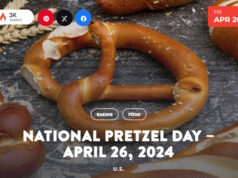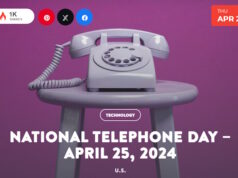
National Candy Cane Day on December 26th gives candy lovers a day to celebrate the red and white striped candies found abundantly during the holidays.
- The earliest verifiable reference to stick candy is a record of the 1837 Exhibition of the Massachusetts Charitable Mechanic Association, where confections were judged competitively.
- In 1844, a recipe for a straight peppermint candy stick, which was white with colored stripes, was published.
- Literature begins by mentioning the candy cane in 1866, and it was first known to be mentioned in connection with Christmas in 1874.
- As early as 1882, candy canes have been hung on Christmas trees.
- The average candy cane is 5 inches tall.
- While most candy canes are not sugar or calorie-free, they do not have any fat or cholesterol.
- Striped red and white candy canes were first introduced in 1900.
- The first machine to make candy canes were invented in 1921 by Brasher O. Westerfield. Until then, they were made by hand.
- Bob McCormack and his brother-in-law & priest Gregory Keller brought the candy cane to the masses. What started out as candy making for McCormack’s friends and family turned into mass production when Keller invented the machine that enabled Bobs Candies to go big time.
- The curved part of the candy cane is called the “warble,” and the straight part is called the strabe.
- Traditionally the flavor for candy canes is peppermint, but there are a variety of flavors.
- Candy canes most likely evolved from a Swedish candy called polkagris. Invented in 1859, these straight candy sticks were originally peppermint flavored with red and white stripes.
- The first candy cane was made over 350 years ago.
- The first historical reference in America to the candy cane dates back to 1847. A German immigrant from Wooster, Ohio decorated his Christmas tree with candy canes.
- Nearly 2 billion candy canes will be sold in the four weeks before Christmas and Hanukkah.
- The world’s largest candy cane was built by Geneva, Illinois chef Alain Roby in 2012. It was 51 feet long, required about 900 pounds of sugar.
- Peppermint candy canes are touted for some substantial health benefits including aiding in gastrointestinal discomfort, curbing cravings, easing headaches, relieving stuffy noses, and of course, freshening breath.
- A study by the National Confectioners Association shows that seventy-two percent of people feel eating the straight end first is best, while twenty-eight percent start with the curved end first.
Sources:












